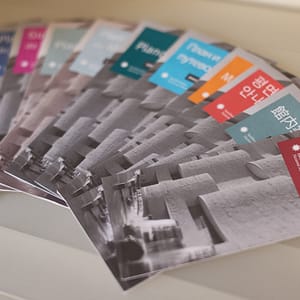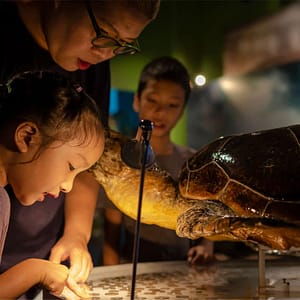Translation for the Academy Museum of Motion Pictures
The Academy Museum of Motion Pictures has been a long time coming. Originally scheduled to open in 2019, the long-awaited institution dedicated to the art and science of movies finally opened its doors on September 30, 2021. Founded by the Academy of Motion Picture Arts and Sciences, the organization behind the Oscars, the museum examines the artistry, history, technology, and social impact of the constantly evolving movie industry. Its exhibits draw from a vast collection that has been growing since the Academy’s founding in 1927 and now includes more than 13 million objects, ranging from photographs to films, scripts, production design drawings, posters, props, and costumes.
A Nuanced Look at the History of the Movie Industry
In the lead-up to the opening, much attention has been paid to the museum’s curatorial tone, which honors and celebrates the cinema while taking a clear-eyed look at the industry. The exhibits boldly confront issues that capture public attention in the era of #MeToo and Black Lives Matter, examining the challenges faced by women and minorities in Hollywood. The narratives on display are at once reflective, critical, and complex.
Galleries examine the social impact of climate change, sexual harassment, and labor relations, while applauding wins by diverse individuals such as Sidney Poitier, Buffy Sainte-Marie, Ang Lee, and Barry Jenkins. Makeup exhibits do not shy away from the industry’s use of blackface, yellowface, and redface, including makeup can labels reading “Chinese” and “Black (Minstrel).” The museum acknowledges the racism surrounding Hattie McDaniel’s 1939 Oscar win for Gone with the Wind, when the actress was relegated to the back of the room because of her skin color. And while the Wizard of Oz gallery gives visitors a glimpse into the creation of the beloved musical, it also calls out Louis B. Mayer’s mistreatment of Judy Garland.
This complex story is told by immersive, dynamic exhibitions and programs that are intentionally diverse, inclusive, and equitable. With such a focus, the Academy Museum is taking exciting steps to make its offerings accessible to multilingual audiences through translation. Eriksen is proud to support the museum with the translation of a variety of materials to support the grand opening and key programs.
Let's Chat!
Get in touch to speak with a member of our team.
Celebrating Ground-Breaking Women
Even before it opened, the Academy Museum began releasing a series of educational programs, providing a glimpse of what visitors might expect in terms of programming. One of these programs, “Breaking the Oscars Ceiling,” examines women’s lack of representation in the movie industry. Hosted by Academy Museum trustee Diane von Furstenburg and moderated by the museum’s chief artistic and programming officer, Jacqueline Stewart, the virtual event features a conversation with Oscar winners Sophia Loren, Whoopi Goldberg, Marlee Matlin, and Buffy Sainte-Marie. The program celebrates the women’s historic wins while presenting a forum in which to discuss past and future challenges. Eriksen translated captions from English into Latin American Spanish, making the roundtable accessible to Spanish-speaking viewers.
Creating Opportunities for Dialogue
The two-part workshop “Film as a Teaching Tool” provides families and caregivers with techniques for meaningful conversations about uncomfortable or challenging imagery found in movies. The program creates learning opportunities around language and empowers participants to ask questions and engage in meaningful dialogue about imagery and its role in storytelling. Eriksen translated and typeset the family guide from English into Latin American Spanish to make the program accessible to Spanish-speaking families.
Featured Services
Learn more about…
Bringing Diverse Stories to Multilingual Audiences
The Academy Museum presents the story of cinema through the voices of the artists themselves. Visitors can hear the words of groundbreaking filmmakers and artists such as Spike Lee, Hayao Miyazaki, and Pedro Almodóvar. To help the museum comprehensively present the vision and approach of the prolific director Almodóvar, Eriksen edited an interview, from Spanish into English, capturing the Madrid Spanish of the director. To be published in an exhibition catalogue, the interview allows English speakers to clearly grasp the nuance of the esteemed director’s words.
To date, Eriksen has worked with multiple departments across the Academy Museum, demonstrating the commitment to language and accessibility that pervades all levels of the institution. The museum’s thoughtful education and public programs across languages enhances its mission and messaging. Eriksen is proud that our translations are helping the museum present the Academy’s diverse stories and perspectives across language and culture.
 Named to the 2024 Inc. 5000 list of fastest-growing companies and ranked among the world’s top 100 language service providers by CSA Research
Named to the 2024 Inc. 5000 list of fastest-growing companies and ranked among the world’s top 100 language service providers by CSA Research

